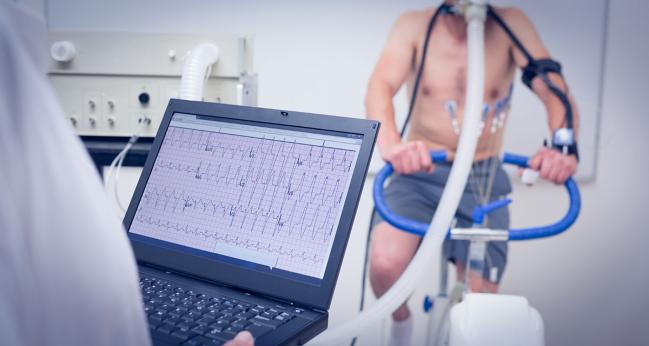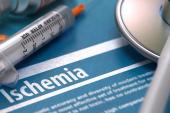Stress Testing Picks Up ‘Novel Risk Patterns’ in Stable CAD Patients: ISCHEMIA
Patients with abnormal findings had worse outcomes down the road. Still unknown is exactly how to modify that risk.

Stress testing results—no matter the modality used to obtain them—predict prognosis among patients with stable, moderate-to-severe CAD, new data from the ISCHEMIA trial suggest.
The study, published online Wednesday in JACC: Cardiovascular Imaging, looked at the links between various characteristics, as unearthed by different forms of stress testing, to tease out any patterns.
“We don’t have a lot of contemporary evidence on the prognostic value of stress testing,” with most data being around 15 years old, said Leslee Shaw, PhD (Icahn School of Medicine at Mount Sinai, New York, NY). Nor is there much information, she told TCTMD, on stress testing’s role in ischemia-guided management, which was the focus of the ISCHEMIA trial.
The ISCHEMIA trial, which cost $100 million to conduct over more than a decade and whose design garnered much discussion along the way, found that an invasive strategy on top of optimal medical therapy (OMT) offered no benefit beyond OMT alone in preventing a range of major cardiovascular events for patients with chronic coronary syndromes. To enroll, participants had to have moderate-to-severe ischemia based on either stress imaging or exercise tolerance test.
Notably, in this current analysis, the investigators were able to not only tease out associations related to the trial’s primary endpoint, but also highlight ischemia’s relationship with both procedural and spontaneous MI. “I think it’s an interesting signal and it reinvigorates our ideas of what we should be looking at in terms of the relationship between noninvasive markers and outcomes,” not just CV death and MI but others, Shaw specified.
“From my perspective, we’ve got to start being more clever about what we expect to impact in a patient who has a lot of ischemia or has LV dysfunction [or] has a lot of scarring,” she explained. Depending on those factors, “the outcomes are going to be very different and the ensuing management should be different.”
For Shaw, the findings show that stress testing can be relied upon as being meaningful, even when done at nonexpert centers.
“You will hear people say, ‘Well, it showed a little bit of ischemia. That’s just probably a false positive or whatever,’” she noted, adding that this study indicates clinicians should not ignore that information. Even if the ultimate choice isn’t to pursue revascularization, Shaw said, “certainly ischemia and infarction should be flags for intensive care.”
Ajay Kirtane, MD (NewYork-Presbyterian/Columbia University Irving Medical Center, New York, NY), who wrote an Off Script blog for TCTMD exploring the trial’s nuances before ISCHEMIA’s release, commented on the new analysis.
Despite ongoing debates about ischemia versus anatomy, it’s clear that “abnormal stress testing can be associated with prognosis,” said Kirtane. “The question is: can the treatment modify that association?”
Abnormal Findings Equal Worse Outcomes
For the current analysis, researchers stratified ISCHEMIA participants by which type of stress testing qualified them for the trial: nuclear imaging (n = 2,567), ECG (n = 1,270), echocardiography (n = 1,085), or cardiac magnetic resonance (CMR; n = 257). Choice of modality was up to each of the trial’s 320 centers around the world, where access to testing types and level of expertise vary, though results were interpreted by a core lab and the tests were conducted according to specified protocols.
Shaw et al investigated several characteristics uncovered by stress testing, including the number of scarred and ischemic segments, and rest/stress LVEF. Each were associated with the trial’s primary endpoint of CV death, MI, resuscitated cardiac arrest, or hospitalization for unstable angina or heart failure, though the number of ischemic segments showed only borderline significance. Among patients who underwent exercise ECG, the number of millimeters of ST-segment elevation was not associated with risk of the primary endpoint.
Association Between Stress-Testing Results and ISCHEMIA’s Primary Endpoint
|
|
HR |
95% CI |
|
Number of Scarred Segments |
1.07 |
1.02-1.13 |
|
Number of Ischemic Segments |
1.03 |
1.00-1.07 |
|
Rest LVEF, per 5% |
0.88 |
0.83-0.93 |
|
Stress LVEF, per 5% |
0.87 |
0.83-0.91 |
The number of ischemic segments, though not strongly predictive of the primary endpoint, did foretell patients’ risks of spontaneous MI (HR 1.08; 95% CI 1.03-1.14) and procedural MI (HR 1.14; 95% CI 1.03-1.25). Additionally, ischemia extent by CMR was associated with both the primary endpoint and spontaneous MI.
Exploratory analyses found no signs that the relationships between stress-testing characteristics and outcome—including the primary outcome, procedural MI, and spontaneous MI—were altered by which treatment patients ultimately received.
One exception was the number of ischemic segments on CMR, which showed signs of a treatment interaction. “Given the small sample size, this should be considered underpowered and hypothesis-generating,” the researchers caution.
They conclude: “Our findings from the ISCHEMIA trial reveal novel risk patterns following stress testing and may prove useful in clinical risk assessment of patients with chronic coronary syndromes. Ischemia extent by CMR demonstrated associations across several trial endpoints, supporting an expanded role for CMR in the evaluation of [these patients].”
Stress Testing in Practice
With the caveat that the CMR numbers were small, Shaw said the consistency in the data for that modality is persuasive. An advantage for CMR does make sense, as it “has much better spatial resolution and is able to look at subendocardial as well as more full thickness myocardial perfusion,” she explained. “It may be that ability to do that is something that is more advantageous as compared to SPECT [nuclear imaging] or perhaps echo, where they’re just looking at wall motion.”
Kirtane, too, urged caution in drawing too many conclusions about CMR. There’s also the more general question of who should undergo stress testing.
In the past, the tool was the “gatekeeper,” he noted, but now “in the era of CT, there are a lot of people who are saying stress testing ought not to be done. I don’t think that’s the appropriate approach. I think the two ought to be really integrated together,” with stress testing done in selected patients whose care might change based on that added information.
Asked about which patients are the best candidates for stress testing in contemporary practice, Shaw based her answer on ISCHEMIA’s design: all patients first underwent coronary CT angiography (CCTA) and then those found to have obstructive CAD (≥ 50% stenosis) were enrolled, after which they underwent stress testing as part of the trial. “So, this would translate [into] CCTA first, followed by stress imaging if they had 50% stenosis or greater,” she advised.
Caitlin E. Cox is News Editor of TCTMD and Associate Director, Editorial Content at the Cardiovascular Research Foundation. She produces the…
Read Full BioSources
Shaw LJ, Phillips LM, Leipsic J, et al. Comparative prognosis by stress ECG and stress imaging: results from the ISCHEMIA trial. JACC Cardiovasc Imaging. 2025;Epub ahead of print.
Disclosures
- Shaw reports receiving grants from the National Heart, Lung, and Blood Institute during the conduct of the trial and currently.
- Kirtane reports no relevant conflicts of interest.





Comments